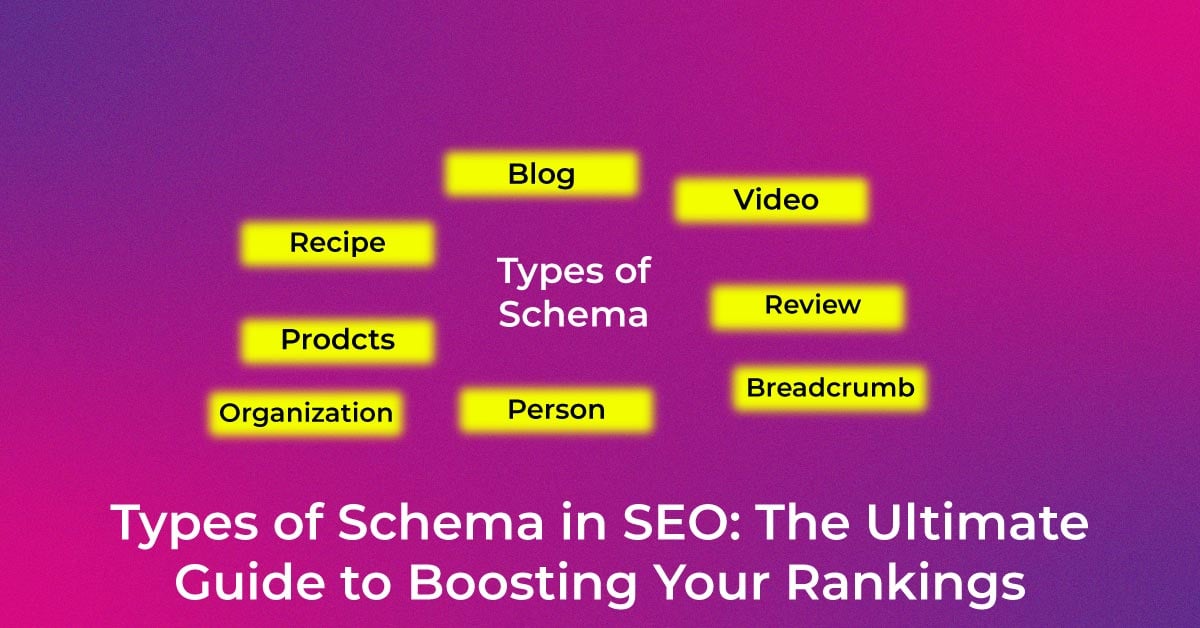Introduction to Movie Schema
Definition of Movie Schema
As you delve into the digital world of film presentation, Movie Schema, or more precisely movie schema type, emerges as a key element in your toolkit. Picture it as the blueprint for structuring intricate movie details in a standardized format, making it a cinch for search engines to understand and display. From titles and directors to cast lists and release dates, every facet of a movie can be neatly organized, paving the way for more dynamic and informative search results.
Importance of Schema Markup in SEO
When you consider the crowded and competitive landscape of online content, standing out becomes vital. This is where the importance of schema markup in SEO shines. By giving search engines a detailed ledger of your movie’s specifics, you pave the foundation for enhanced search visibility. Think of Movie Schema as the secret sauce that not only helps you leap out on search engine results pages (SERPs) but also conveys a wealth of information to movie enthusiasts showing improvement in SERP positioning post-schema implementation.
You’re essentially handing search engines a megaphone to amplify your content’s appeal to users. This results in a richer, more engaging experience right from the search results, encouraging potential visitors to choose your site over others. Time and again, well-implemented schema markup has proven to be an indelible part of a strong SEO strategy, ensuring that moviegoers find exactly what they’re looking for – your compelling movie content.
Understanding the Components of Movie Schema
Diving into the components of Movie Schema is akin to assembling a puzzle; each piece fits neatly into the larger picture of your content’s online presence. These components are the essential elements that describe your movie in the finest detail. They ensure that every critical aspect of the film is captured and communicated to search engines for a complete representation.
Key Attributes of Movie Schema
1. Movie Name
The movie name is the marquee of your online content, the beacon that draws eyes amidst a sea of information. It is the primary identifier for the film, ensuring immediate recognition among audiences and establishing the essence of your movie content. For instance, the movie “The Shawshank Redemption” is not just a title; it’s a name that resonates with themes of hope and perseverance, compelling users to explore further.
In search results, the movie name is your first handshake with the audience, a chance to make a lasting impression. Ensuring it’s clearly defined in your Movie Schema allows search engines to showcase it prominently. Imagine your movie name popping up in bold letters, drawing viewers in as if it were the bright lights on a theater marquee. This helps your content bask in the spotlight, where potential viewers can’t help but notice it.
2. Director
The director of a movie is often the maestro behind the scenes, orchestrating the vision that ultimately brings the story to life on the screen. In the context of Movie Schema, including the director’s name serves to inform viewers and cinephiles about the creative force behind the movie, potentially influencing their decision to watch it.
For instance, the name “James Cameron” immediately evokes a sense of grandeur and innovative filmmaking, thanks to his association with groundbreaking films like “Avatar” and “Titanic”. When the director’s name is tagged in the Movie Schema, it’s like a signature on a masterpiece, providing not just context but also a seal of quality. Including this information from a review mentioning the director’s unique style or influence on the movie could be vital for searchers who admire their work and follow their careers.
3. Release Date
The release date is a timestamp, a key to the historical and cultural context of a movie that can pique the curiosity of film historians and enthusiasts alike. It’s more than just a year or a date; it’s an invitation to transport audiences back to the time of the movie’s first appearance, to relive the excitement or to understand its influence within its era.
For instance, specifying that “The Lion King” was released on “1994-09-22” is not just providing a date; it’s highlighting the film’s place in the animation renaissance of the ’90s. This precise detail in your Movie Schema ensures that search results accurately reflect the film’s place in the timeline, offering both nostalgia and historical placement to potential viewers showing the increased interest in movies from specific periods.
Including the release date with the film’s anniversary milestones or special events related to the release can accentuate the relevance of classic films or garner anticipation for reboots and sequels. It’s essential for capturing moments that matter in the film legacy and enhancing the discoverability of content for themed searches, such as holiday classics or summer blockbusters.
4. Duration
Duration, the runtime of your film, is an indispensable detail for audiences selecting their next cinematic journey. Movie Schema captures this temporal aspect, informing potential viewers how much time they’ll invest in watching the story unfold. For example, the epic length of “Gone with the Wind” or the crisp, fleeting moments of a short film signals the commitment required from the viewer.
By stating the movie’s length, like “2h 29min”, you set expectations. It can influence users to balance their schedules with their desire for entertainment where a user chooses a shorter comedy over a longer drama due to time constraints. In your content’s schema markup, this allows precise filtering in search results for those seeking either a quick escape or a more immersive experience.
5. Genre
The genre is akin to a compass in the vast sea of cinema; it guides the viewer’s choice, aligning with their mood or preference. Whether it’s the adrenaline pump of an action flick, the heart-fluttering moments of a romance, or the cerebral intrigue of a mystery, declaring the genre lays out a clear path for audiences seeking a particular narrative flavor.
For instance, when you define a movie as a “Thriller”, it sets a pulse-quickening promise, whereas “Comedy” primes them for laughter. This categorization in Movie Schema is crucial for targeted searches like “family-friendly animation” or “80s horror classics”. By clearly tagging the genre in your content’s markup, your movie can be easily discovered by fans and recommended by search engines in genre-specific queries.
6. Cast and Crew
The cast and crew are the lifeblood of any film, the collective talent that breathes authenticity and allure into the storyline. Movie Schema provides a stage for the ensemble, from the luminosity of lead actors to the vital contributions of supporting artists and skilled crew members. Acknowledging each member in this digital roll call offers a nod to their craftsmanship and appeal.
Highlight the star-studded cast by noting “featuring Emma Stone and Ryan Gosling”, or spotlighting brilliant directors like “a Martin Scorsese film”, helps form an emotional bond with fans and potential viewers. These names carry weight; they can sway choice and spark interest, beckoning audiences familiar with their work.
7. Synopsis
A synopsis is the narrative compass for potential viewers, offering a glimpse into the plot without unveiling too much. It is a finely tuned balance between enticement and mystery, giving just enough to intrigue and invite further exploration. Within Movie Schema, the synopsis serves as a sneak peek, a textual trailer that captures the essence of the film’s storyline.
Imagine reading a brief description that whisks you away to the world of “Interstellar”, where the fate of humanity hinges on a journey beyond the stars. This brief narrative distilled into a few sentences can mesmerize and coax the reader into seeking out the full cinematic experience.
Benefits of Implementing Movie Schema
Enhanced Visibility in Search Results
Enhanced visibility in search results can be the deciding factor in capturing a viewer’s attention. By integrating Movie Schema, your content is embellished with rich snippets – those eye-catching previews that appear in search results, often with star ratings, images, and key information that leap out from the standard text entries.
This increased visibility acts much like a well-placed billboard, ensuring your movie stands out in the congested highway of online searches. Imagine a carousel feature appearing at the top of a Google search, showcasing your film’s poster, rating, and a snippet of the synopsis, providing an instant visual advantage and drawing viewers to click through to your site.
When search engines can effortlessly grasp the content and context of your movie pages, they reward you with better placement and richer search displays. The result is a magnified online presence that directly correlates with more clicks affirming that well-implemented Movie Schema increases CTR. Enhanced visibility means not just being seen, but being seen by the right audience – those already searching for the cinematic worlds you’re showcasing.
Improved User Experience
Improved user experience through Movie Schema is like offering a virtual usher, guiding viewers smoothly to their desired information. It ensures that when your content pops up in search results, it’s not only easily noticeable but also rich with data that enhances the decision-making process for the moviegoer.
Visualize the convenience as viewers hover over search results and find neatly packaged pieces of data: the genre, user ratings, or even a short synopsis, all readily available at their fingertips. This streamlined flow of information can be the difference between a user bouncing off your page or diving deeper into the content.
When a user clicks through and lands on a page that aligns with their search expectations, bolstered by consistent schema markup, it establishes trust and satisfaction. Movie Schema lays out the welcome mat, sets the scene, and invites an audience to stay, browse, and enjoy. The direct benefit is a more engaged user, one who is more likely to return and recommend your site, generating a ripple effect of positive interactions.
Increased Click-Through Rates
Increased Click-Through Rates (CTR) can be likened to an applause meter for your online presence; the higher it is, the more your content resonates with audiences. Incorporating Movie Schema into your website is a tactical move that can lead to this significant uplift in CTR. It’s the digital equivalent of rolling out the red carpet, where each additional piece of structured data—be it ratings, director names, or run time—acts as an enticement for movie enthusiasts to visit your site.
Imagine witnessing a surge in site traffic after optimizing your movie pages with schema markup. These rich results stand out against plain text listings, drawing the user’s eye and, subsequently, their clicks. By facilitating a clearer path to what viewers are searching for, such as a highly anticipated release date or a beloved actor’s latest performance, you’re effectively increasing the odds that a user will select your content over a competitor’s. In the world of SEO, the winning combination often includes not only ranking high but also showcasing the most clickable information.
How to Implement Movie Schema Markup
Implementing Movie Schema Markup on your site may seem daunting, but it’s easier than it looks with the right approach. The goal is simple: make your movie-related content clearer for search engines, which boosts your site’s visibility and engagement.
Picture your website as a go-to spot for movie fans, where search engines highlight your content with special features. This isn’t just about getting noticed; it’s about being recognized as a trusted source for movie information.
Using Movie Schema Markup helps search engines grasp your content’s context, allowing them to present it in a more appealing format. It’s like giving your pages a VIP pass that grabs attention.
With a thoughtful strategy, your site can attract both film enthusiasts and casual viewers, increasing traffic and interaction. Let’s dive into the tools and steps to make your content stand out effectively.
Choosing the Right Tools for Implementation
Using WordPress Plugins (e.g., Rank Math)
Harnessing the capabilities of WordPress plugins like Rank Math can simplify the process of adding Movie Schema markup to your website. Rank Math acts like an SEO expert right in your dashboard, providing a straightforward way to enrich your movie pages with structured data without requiring coding expertise.
Step 1: Install Rank Math
- Begin by installing the Rank Math plugin from the WordPress plugin repository.
- Activate the plugin and follow the setup wizard to configure basic settings.
Step 2: Access Movie Schema Markup Options
- Navigate to the post or page where you want to add Movie Schema markup.
- In the Rank Math settings, find the options for adding structured data.
Step 3: Fill Out Movie Attributes
Picture the process as filling out a detailed questionnaire about your movie:
- Director: Specify the director’s name.
- Release Date: Enter the film’s release date.
- Cast: List the main cast members.
- Other Attributes: Include additional relevant information like genre, duration, and description.
Step 4: Utilize the SEO Analysis Tool
- Take advantage of the Rank Math SEO analysis tool, which guides you through optimizing your entire post.
- Illustrate how effortlessly it helps in implementing the schema markup.
Step 5: Preview Search Engine Results
- Use the preview feature to see how your result might appear in search engines.
- This feature provides a snapshot of how your newly enhanced page will look in the SERPs, helping you visualize the outcome.
Benefits of Using Rank Math
- User-Friendly Interface: Rank Math removes the need for deep technical knowledge and offers a guided experience in schema implementation.
- Time-Saving: The streamlined process saves considerable time and ensures accuracy and consistency across your movie content.
- Enhanced Visibility: By utilizing such tools, you position your content advantageously to captivate the audience right from the search results, compelling users to engage with what lies beyond the play button.
Manual Implementation with JSON-LD
When it comes to crafting a more customized SEO strategy, manual implementation with JSON-LD is akin to a bespoke suit—it’s all about tailoring the fit precisely to your content’s unique needs. JSON-LD signifies JavaScript Object Notation for Linked Data, which may sound like technical jargon, but it’s essentially a script-based method to embed the structured data directly into the HTML of your webpage.
Imagine you’re writing a script for a scene, but instead of dialogue, you’re detailing the essential elements of your movie—its name, director, actors, and so on—for search engines to easily understand and display. JSON-LD allows you to do exactly that, providing a flexible and powerful way to inject Movie Schema into your site’s architecture.
With manual implementation, you take full control of the precision and comprehensiveness of your markup. While it does require some understanding of code, resources like Google’s Structured Data Markup Helper can offer guidance. Think of using this tool as drawing the blueprint for your web page’s structured data, which you can then embed in the head section of the HTML.
The payoff of manually implementing JSON-LD extends beyond customization; it often results in faster loading times since the data is not tied up in the styling and structure of the webpage. This not only ensures a streamlined user experience but also aligns with Google’s emphasis on page speed as a ranking factor.
Whether you choose to go manual or plug-in powered, the goal remains consistent: to use Movie Schema to create a compelling story for search engines that translates into starred reviews from your audience members.
Step-by-Step Guide to Adding Movie Schema
1. Accessing Schema Settings in Your CMS
To begin, log in to your CMS dashboard. This is the foundation for adding Movie Schema to your content. If you’re using WordPress, navigate to the WordPress dashboard—your main control center.
- Go to the ‘Posts’ or ‘Pages’ section, where all your content is stored.
- For new content: click ‘Add New’.
- For existing content: find the post or page you want to edit, and click on its title.
- Once inside the post or page, locate the Schema settings. These are often found within a specific tab or through your SEO plugin.
- Look for options to set the Schema Type. Select ‘Movie’ from the dropdown menu to specify the schema.
The exact steps might vary based on your CMS or plugin, but the goal is to integrate Movie Schema to improve how your content appears in search results.
2. Filling Out Movie-Specific Information
After accessing the Schema settings, it’s time to fill out the details that represent your movie. This information enhances how search engines and viewers perceive your content.
- Movie name: Enter the exact title of the movie.
- Director and cast: Add the director’s name and the main cast members.
- Release date, genre, and other relevant details: These fields ensure search engines have a complete profile of the movie.
Each field should be filled out carefully to optimize how your movie is presented in search results. The more complete the data, the richer the display for potential viewers.
3. Saving and Validating Your Markup
Once all details are entered, click ‘Save’ or ‘Publish’ to finalize your changes. After saving, validate the markup to ensure there are no errors.
- Use tools like Google’s Rich Results Test or Sitechecker’s Schema Markup Checker to validate your schema.
- Paste the page’s URL into the tool, and it will generate a report on any issues.
If errors are found, make the necessary corrections. Once everything checks out, your Movie Schema is ready, ensuring your content is optimized and easily discoverable in search engine results.
Common Mistakes to Avoid When Using Movie Schema
Inaccurate or Incomplete Data Entry
Inaccurate or incomplete data entry can disrupt the flow of your Movie Schema, much like a movie blooper. Just as every line in a script matters, so does every detail in your schema. Mistakes, like a wrong release date or missing director, can hurt search engine performance. The solution? Pay close attention to detail, double-check entries, and ensure accuracy, like perfecting the final cut of a film. Each correct entry boosts user engagement and search engine rankings, helping your content stand out.
Failing to Validate Markup
Skipping markup validation is like skipping rehearsals before a play—it increases the risk of errors in the final performance. Without validation, you might have misplaced tags or syntax issues that stop search engines from properly displaying your Movie Schema.
Just like a director reviews a film’s final cut, you should check your schema markup using tools like Google’s Rich Results Test. These tools ensure your markup is error-free and ready for search engines.
Validation guarantees your movie content shines in search results, error-free, like a flawless opening night performance.
Overusing Schema Markup
Overusing Schema Markup is like adding too many special effects to a movie—it distracts from the main story. While it’s great to optimize for SEO, adding excessive or irrelevant Schema can confuse search engines, just like a complex plot confuses viewers. The key is balance. Use markup that fits your content and enhances user experience without overwhelming it. Focus on what matters, letting your content be the star, with Schema as a helpful, subtle support.
Best Practices for Maintaining Movie Schema Markup
Regularly Updating Information
Keep your Movie Schema updated, just like maintaining a film set. As your movie evolves with new release dates, versions, or cast changes, your Schema needs to reflect these updates to stay relevant. Regular updates ensure that search results display the most accurate, up-to-date information, helping you maintain SEO rankings and user trust. This ongoing process is essential for keeping your movie content visible and current online.
Monitoring Performance in Search Results
Monitoring the performance of your Movie Schema in search results is like tracking box office numbers after a movie release. It helps you understand how well your content is engaging viewers in search. Tools like Google Search Console show how often your movie pages appear, what search queries bring users to them, and the click-through rates they generate. Regular monitoring allows you to spot trends, fix issues, and adjust your strategy, ensuring your content stays visible and relevant, much like refining a film after its release.
Staying Informed on Schema.org Updates
Staying updated on Schema.org changes is crucial, like a scriptwriter keeping up with industry trends to stay relevant. Schema.org evolves, adding features that impact how search engines interpret your Movie Schema. For example, new properties like streaming availability could boost your SEO if implemented early.
To stay ahead, regularly check forums, follow tech blogs, or subscribe to structured data newsletters. This keeps your Movie Schema accurate and competitive, ensuring it effectively represents your content to both search engines and users.
Conclusion
In short, Movie Schema is a valuable SEO tool that boosts your movie content’s visibility in search results. By using structured data, you guide search engines to highlight important details, like promoting stars on a movie poster.
Remember, it’s not a one-time task. Regular updates and optimization are key, requiring both technical skill and creativity. This ensures your audience enjoys a smooth, engaging experience.
With rich snippets, your content can stand out, driving traffic and engagement. Stay updated with Schema.org changes to keep improving. Lights, camera, optimize—let your movie content shine online!
Popular Searches
How useful was this post?
0 / 5. 0

















